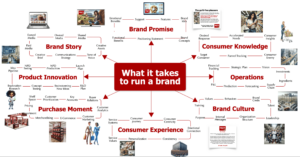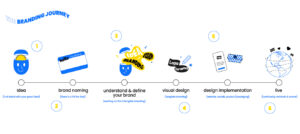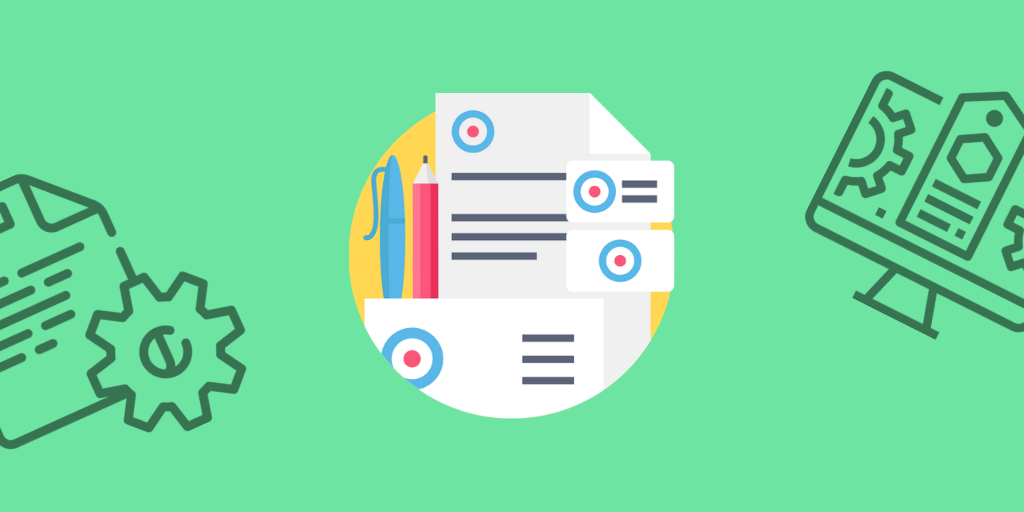In the competitive world of ecommerce, your brand is your battle cry and truth be told building a successful ecommerce brand is no easy feat. Branding is what sets you apart from the sea of similar products and resonates with your target audience. However, managing a brand’s multiple facets – from visual identity to customer experience – can be chaotic and overwhelming, especially as your business grows. This is where brand management software for ecommerce comes in- a game-changing tool that helps you streamline brand operations, maintain consistency, optimize content creation, elevate customer experience and drive ecommerce success. In this comprehensive guide, we’ll delve into the world of brand management software, exploring the benefits, features, and best practices to help you build a thriving brand empire that leaves a lasting impression on your customers.
What is brand management software and why do you need it?

In today’s ecommerce landscape, building a strong brand is crucial for standing out from the crowd and driving long-term success. Brand management software is a comprehensive solution that enables you to centralize and control all aspects of your brand, from product information and customer reviews to social media and marketing campaigns. With this software, you can ensure consistency and accuracy across all touchpoints, protect your brand’s reputation, and make data-driven decisions to drive growth and profitability. In essence, brand management software is the backbone of a successful ecommerce brand, providing a single platform to manage, monitor, and measure your brand’s performance, and ultimately, helping you build a loyal customer base and a thriving online business.
Key features to look for in brand management software
When it comes to selecting the perfect brand management software for your ecommerce business, it’s essential to know what features to look for. A robust brand management software should be equipped with a range of tools and functionalities that enable you to effectively manage your brand’s online presence, products, and customer interactions. Here are some key features that make these tools invaluable for ecommerce businesses:
a) Digital Asset Management (DAM): Imagine a central hub for all your brand assets – logos, product images, marketing materials, and more. DAM features help you organize, store, and easily access these assets, ensuring everyone on your team uses the latest and approved versions.
b) Brand guideline management: Forget hunting down scattered brand documents! Create and store your brand guidelines – including color palettes, fonts, and messaging – within the software. This ensures brand consistency across all platforms.
c) Content creation & collaboration: Streamline your content creation process. Many platforms offer tools for creating social media posts, product descriptions, and email campaigns, all adhering to your brand guidelines. You can even collaborate with team members directly within the software.
d) Automation and workflow: Schedule and automatically publish your content across various channels, saving you precious time and ensuring consistent brand messaging.
e) Brand monitoring & analytics: Stay on top of online brand mentions and customer sentiment. Analyze data to understand how your brand is perceived and make informed decisions to optimize your brand strategy.
f) Seamless integration: A good brand management software should integrate with other ecommerce platforms, such as Shopify, Selly Africa, Magento, and WooCommerce, to ensure a smooth and efficient brand management experience.
Benefits of implementing brand management software in ecommerce

Establishing a strong brand identity is crucial to standing out from the competition and building a loyal customer base. Integrating brand management software into your ecommerce operation offers a multitude of benefits:
- Enhanced brand consistency: Maintain a unified brand voice and visual identity across all touchpoints, fostering trust and brand recognition.
- Improved efficiency: Streamline workflows and save time by centralizing brand assets and automating tasks.
- Empowered teams: Equip your team with the tools and resources they need to represent your brand effectively.
- Data-driven decisions: Gain valuable insights into your brand performance and use data to refine your brand strategy.
- Elevated customer experience: A consistent and well-defined brand presentation fosters a positive customer experience, leading to increased brand loyalty.
Choosing the right tool for your brand journey

With a several brand management software options available, selecting the perfect tool can feel confusing. Here are some factors to consider:
- a) Business size & needs: Consider the volume of your brand assets, team size, and specific needs. There are solutions catering to both small businesses and large enterprises.
- b) Budget: Brand management software pricing varies depending on features and user tiers. Determine your budget and find a solution that offers the functionalities you need within your price range.
- c) Integrations: Ensure the software integrates seamlessly with your existing ecommerce platform and marketing tools to streamline workflows.
- d) Ease of use: Opt for a user-friendly platform with an intuitive interface that your team can easily learn and adopt.
Best practices for using brand management software to drive ecommerce success
As you embark on your journey to build a brand empire, harnessing the power of brand management software is crucial to driving ecommerce success. To maximize the potential of this technology, it’s essential to adopt best practices that streamline your brand’s operations, amplify your online presence, and foster a loyal customer base.
Content is king
a) Brand-aligned content creation: Use the software’s templates and guidelines to generate high-quality content like product descriptions, social media posts, and email campaigns that all seamlessly reflect your brand voice and identity.
b) Collaboration is key: Facilitate seamless collaboration among your team members. Utilize the platform’s comment and feedback features to ensure everyone is on the same page when it comes to brand messaging.
c) Omnichannel storytelling: Plan and schedule content across various channels – website, social media, email – to ensure a consistent brand narrative reaches your target audience wherever they are.
Data drives decisions
a) Measure what matters: Leverage the software’s built-in analytics to track key performance indicators (KPIs) like brand mentions, customer sentiment, and content engagement.
b) Data-driven optimization: Analyze your data to identify areas for improvement. This can inform decisions on content strategy, brand messaging, and marketing campaigns.
c) A/B testing is your friend: Utilize A/B testing features to test different variations of marketing campaigns, product descriptions, or even website layouts. See what resonates best with your audience and optimize your brand strategy accordingly.
Embrace automation, empower your team
a) Free up your time: Automate repetitive tasks like social media posting and email marketing blasts. This frees up your team’s time to focus on creative endeavors and strategic planning.
b) Empower your team: Equip your team members with the tools and resources they need to represent your brand effectively. User permissions and role-based access within the software ensure brand consistency while empowering team members to contribute their best work.
c) Embrace scalability: As your brand grows, the software should be able to scale with you. Opt for a platform that can accommodate an expanding team and manage a growing volume of brand assets.
Building brand loyalty
a) Personalized customer experiences: Utilize customer data insights to personalize your marketing efforts. This can be anything from product recommendations to targeted email campaigns, fostering brand loyalty and customer satisfaction.
b) Building relationships: Leverage the brand management software to manage customer interactions and respond to inquiries promptly. This reinforces a positive brand image and builds lasting relationships with your customers.
c) Embrace brand advocacy: Encourage brand advocates by creating a platform for user-generated content and positive customer reviews. This authentic brand storytelling further strengthens your brand identity and fosters trust among potential customers.
Top brand management software options for ecommerce businesses
Having the right brand management software can make all the difference between success and mediocrity. With so many options available, it can be overwhelming to navigate the vast sea of tools and platforms. Choosing the right brand management software is crucial and here’s a breakdown of some leading options, categorized by their strengths:
Industry leaders with robust features
a) Adobe brand management (part of adobe creative cloud): A comprehensive solution offering brand asset management (DAM), brand guideline creation, marketing automation, and analytics. Ideal for large enterprises with complex branding needs. (Pricing varies based on plan and features)
b) Salesforce marketing cloud: Integrates seamlessly with other Salesforce products, providing powerful brand management features like DAM, social media management, email marketing, and customer journey mapping. (Pricing varies based on plan and features)
Brand management & design focus
a) Bynder: Streamlines brand asset management, brand guideline creation, and marketing campaign management. Offers collaboration tools and integrates with various marketing platforms. (Paid plans with tiered pricing)
b) Frontify: A cloud-based platform with a strong focus on brand asset management and brand style guide creation. Features include version control, digital rights management, and content approval workflows. (Paid plans with tiered pricing)
Social media management & brand monitoring
a) Brand24: Specializes in social media listening and brand monitoring. Tracks online brand mentions, analyzes sentiment, and identifies brand advocates. Perfect for staying on top of your online brand reputation. (Paid plans with tiered pricing)
b) Sprout Social: Offers social media management features like scheduling, publishing, and analytics, along with social listening capabilities. Ideal for managing social media presence and engaging with your audience. (Paid plans with tiered pricing)
Ecommerce-specific solutions:
a) Brandfolder: Designed specifically for ecommerce businesses, Brandfolder offers DAM functionalities with features tailored for product image management and marketing material creation. (Paid plans with tiered pricing)
b) Contentful: A headless content management system (CMS) with a focus on creating and managing omnichannel content experiences. Integrates with various ecommerce platforms and provides tools for branding consistency. (Paid plans with tiered pricing)
In conclusion, building a brand empire in the ecommerce space requires a strategic approach to brand management. With the right tools and software, you can streamline your operations, increase efficiency, and drive growth. The power of brand management software creates a cohesive brand identity, manage your online presence, and deliver a seamless customer experience. Whether you’re just starting out or looking to scale your existing business, investing in the right brand management software can be a game-changer. With these guidelines outlined in this ultimate guide, you’ll be well on your way to building a brand empire that dominates the ecommerce landscape. So, take the first step today and start building your brand empire with the right software and strategies.
